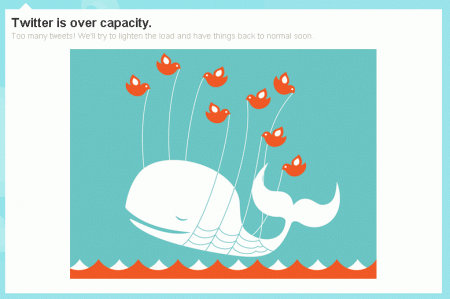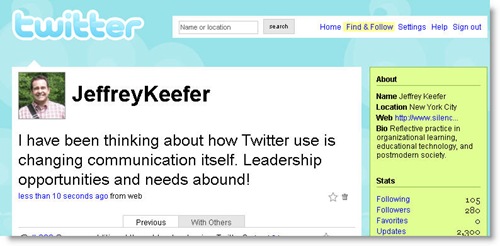Tag: Twitter
Winter Solstice and Yule – ne…
Exclude (Twitter) Feeds from Overwhelming WordPress’s Front Page
Do you use Twitter Tools, the wonderful WordPress plug-in that integrates Twitter feeds into and out from a blog? I do, and the main reason I like it is that it allows me to capture my Tweets on a daily basis as a single blog post.
Why, in turn, might I want this? Two reasons–firstly to capture my words and thoughts as I process life and work, and secondly because the daily blog post generates an email notification that in turn gets sent to friends and colleagues who read emails and not blogs or RSS feeds per se. This allows people who are interested in my life (there are a few of them, at least!) who do not live in the active world of social media, to still get a sense of what I am doing via a daily email push.
However (and here is the issue), I do not like having the front page of my blog filled with (at least) every other post to be a Twitter-post from the previous day. Looking for ways to handle this I finally stumbled upon the great WordPress plug-in Simply Exclude. This plug-in allows for a great amount of control of what sort of content to exclude from parts of a public blog. Go ahead, look down my homepage and see if you can see any Twitter-based posts. No? That is because I had Simply Exclude prevent the daily Twitter post from appearing on my front page. They are still there, such as right here, fully searchable (via keyword, month, category, etc.) and present enough to generate the RSS and email notifications, but flexible enough to make my blog appear more than just a Twitter archive.
While I actively try to have inclusive and engaging instructional events, I like having the option of excluding things from where they really do not fit. Simply Exclude may have some creative uses for WordPress-powered blogs that are more oriented to content management systems than traditional blogs, and I would like to explore these further.
New “Twitter Is Over Capacity” Icon
Twitter in Business Week & in My Graduate Leadership Class
I have been saying for some time now that Twitter is one of those phenomena that come along from time to time that changes the very way we communicate. It does not allow us simply one more way of doing what we have been doing. Instead, it alters communication itself.
Those of us who Tweet often think and share and communicate and interact differently from before we started with the application.
I used the example in my graduate Leadership class on Tuesday night, “How many of you have cell phones?” Yes, all their hands raised. What surprised me was my follow-up, “How many of you do not have land-lines at home?” Half raised their hands. HALF! In only a few short years the importance and modality and paradigm of using a phone has changed, and in the process our connectivity and expectations and ways of communicating have changed as well.
Business Week seems to be leaning in this direction as well with their article in this week’s issue. Those of us who have been using Twitter find our ways of interacting different as well.
Case in point. I Tweeted on Tuesday night, in my graduate Leadership class, while I was demonstrating Twitter. I sent a Tweet and asked anybody out there to say hello to my class. I received 5 replies from friends and colleagues around the world who were reading Twitter and sent their greetings and encouragement in return. FIVE people. Unscheduled. Unplanned. Real-time. Try communicating to a group in any other medium and getting a response back so quickly. The speed of information exchange, idea development, collaboration, and our very approach to communication itself is now put on its head.
Where is leadership in all this? I think the question is more along the lines of new possibilities for leadership in ways we never considered. With communication increasingly flat, the sky is the limit.
Do you agree with my assessment?

